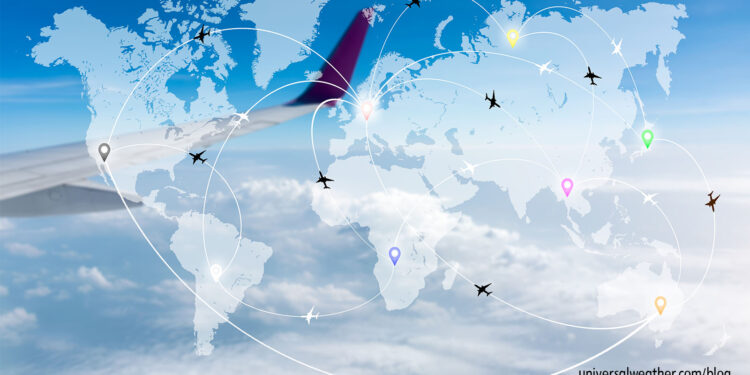Tips for Selecting a Business Aviation Tech Stop – Part 1: Key Considerations

This is part one of a two-article series on great tech stops and items to consider for travel to those airports.
Choosing the best tech stops for your long-haul international trip is always an important planning item. Considerations include route of flight, time of operation, runway information, airport and handling infrastructure, and fuel availability. Choices may also be impacted by your type of operation, size of aircraft and requirements for ancillary services, such as in-flight catering or airline connections for crew swaps.
The following is an overview of some great tech stops and what you need to know:
1. Tech stop basics
Is the particular tech stop on the great circle routing of your planned flight? What are the airport operating hours, and are there any curfews? Will weather be an issue, and is there adequate runway and support infrastructure? If the location is not a 24 hour airport of entry (AOE), is overtime available for the airport, customs, immigration, and quarantine (CIQ), and fuel provider? These are just some of the questions operators have when planning a tech stop. Ideally you’ll want at least adequate service and ground support equipment (GSE) availability along with capable ground handling, fire coverage, fuel, lav/water service, ground power unit (GPU), CIQ service, and in-flight catering. Other basic planning considerations include airport slot, permit and lead time requirements along with, in some cases, availability of maintenance support and commercial airline services for crew swaps. Don’t forget to factor in crew/passenger visa requirements as well as hotel availability in the case an overnight stop is needed.
2. Popular international tech stops
There are many good tech stop options throughout all regions of the world, and the ones in this article are just some examples. Some of the more common tech stops include Shannon (EINN), Bangor (KBGR), Gander (CYQX), Anchorage (PANC), Honolulu (PHNL), Al Maktoum Intl (OMDW), Singapore Seletar (WSSL), Novosibirsk (UNNT), Petropavlovsk (UHPP), Athens (LGAV), Santa Maria (LPAZ) and Male (VRMM). All of these are AOEs and all but LPAZ are 24 hour airports. LPAZ, however, has airport overtime available with advance arrangement. Full aircraft support services and credit are available at all these locations, with prior arrangement, and each offers airline connection choices for crew swaps and nearby hotel accommodations.
3. Tech stop alternatives
If a preferred tech stop choice is not practical due to weather or other considerations, there are alternatives to consider:
- For EINN consider Dublin (EIDW) or perhaps an airport in Iceland such as Keflavik (BIKF)
- For KBGR consider Portland (KPWM)
- For CYQX good alternates include Stephenville (CYJT), St Johns (CYYT) and Goose Bay (CYYR)
- For PANC you can use Fairbanks (PAFA) as an alternate
- For PHNL, Maui (PHOG) is a popular alternate
- For OMDW consider Dubai Intl (OMDB) or Muscat (OOMS)
- For VRMM alternatives include Gan Island (VRMG) and Colombo (VCBI)
- For WSSL consider Singapore Changi (WSSS) or Kuala Lumpur (WMSA)
- For LGAV you can use Thessaloniki (LGTS) or Paphos (LCPH)
- For GVAC consider Dakar (GOOY) or Las Palmas (GCLP)
- For LPAZ you may use Ponta Delgada (LPPD), but there are curfews to consider
- For UNNT you might consider Ekaterinburg (USSS) – 740 nautical miles (NM) away
4. Alternate tech stop considerations
Selecting viable alternates for planned tech stops is always an important planning element. The tech stop alternates you choose may change depending upon actual route of flight, weather and individual operator preferences. Some tech stop alternates may be in a country that’s different from your planned destination. In this case you’ll need to consider any applicable landing permits, airport slots, prior permission required (PPR) and/or visas requirements.
5. Visa requirements
Many regions that normally require visas, such as the United Arab Emirates (UAE) may waive visa requirements if you’re just making a tech stop and no crew/passengers are embarking/disembarking. But, the rules do vary. Russia, for example, does not require crew or passenger visas for tech stops, so long as you’re only making one stop in country and no one is embarking or disembarking the aircraft. Canada for the most part, does not require visas for tech stops, but certain nationalities of crew/passengers may need visas even for quick turn tech stops. For U.S. tech stops visas are required for all on board, with the exception of Canadian citizens. Be mindful, however, that certain countries have mandates that all crew/passengers have required visas prior to arrival. If you arrive without the appropriate visa you may be fined, detained or deported.
6. CIQ clearance
For international tech stops CIQ clearance may or may not be required, depending on the location. Some countries do not stipulate CIQ clearance for international tech stops as long as no one embarks/disembarks. Other countries may not require crew/passenger visas on the condition that you do not deplane or leave the airside secure area. On the other hand, some international locations routinely conduct full or express CIQ clearances, and security screening of all luggage, for all international tech stops. It’s best to confirm visa and CIQ clearance requirements prior to departing to any international location.
Conclusion
It’s best to speak with your trip support provider regarding recommended techs stops and requirements for travel to those destinations. Allow appropriate lead time for all required permits, airport slots or PPRs, required aircraft services and/or credit arrangements. Consider airport, CIQ and fuel provider hours along with any applicable curfew times and overtime availability. Always have after hour contact details for your ground handler, air traffic control and fuel provider – just in case.
Questions?
If you have any questions about this article or would like assistance planning your tech stops for your trip, contact me at greglinton@univ-wea.com.
Later, we’ll discuss permit, airport slot, and PPR requirements for travel to these particular airports.




